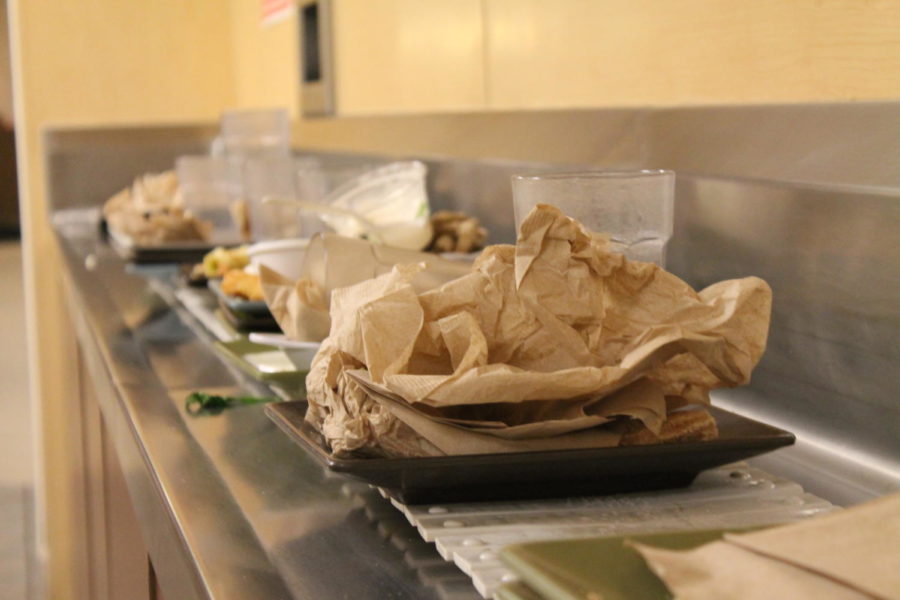ISU Dining initiative promotes food waste as useful commodity
Richard Martinez/Iowa State Daily
Thanks to a large amount of student support for the program, ISU Dining began composting in order to make food waste more useful. Napkin and paper waste are the largest contributors to waste, but they are composted with pulpers to reduce space.
May 2, 2014
With initiatives to go “green” becoming more popular, an ISU professor is collaborating with ISU Dining by looking into ways to turn food waste into bioethanol.
Kent Davis, ISU Dining communications specialist, said that ISU Dining began looking at ways to reduce its food waste with a variety of green programs. The push to look into alternatives for food waste going to landfills came from an honors class in 2008.
At first, ISU Dining looked into dining without trays. The class found that students were wasting less food without trays because they didn’t have a tray to pile excess food on.
“We found for the average student, food waste went down to 0.22 pounds of food per student,” Davis said.
Although this number might not seem that big, by multiplying it by the roughly 11,000 students who eat at the dining centers, the amount of food waste can add up.
ISU Dining also implemented a composting initiative.
“In 2011, nearly 400 tons of food waste was diverted from the landfill to composting,” Davis said.
Davis said that the organic material that is left over from a plate is sent through a pulper that breaks up the food and takes the water content out. The resulting material is then sent to the south side of campus to be composted. It can then be brought back for beautification efforts on campus.
Stephanie Jung, associate professor of food science and human nutrition, had previously conducted research with soybeans to convert soybean fibers into bioethanol.
“At the same time, as a consumer, I was frustrated with my own attitude on how I wasted food,” Jung said.
She then looked at the possibility of using food as a source for bioethanol. Jung decided to ask ISU Dining about collaborating on a food waste project.
She discovered that 50 percent of the waste at breakfast was from napkins, whereas the amount of waste from napkins dropped to 16 percent at lunch.
Jung collected three different kinds of samples: whatever waste came out of the pulper, including napkins and food; food waste without napkins and napkins themselves.
Jung is looking into different enzymes that will aid yeast in converting the fermentable sugars from the napkin and food waste into bioethanol.
Through her research, she has found that the most efficient sample in creating bioethanol was just the napkins themselves.
Jung is applying for grants to further her research. She said the next step in her research is to look into optimization to be done to increase the yield of ethanol. A life cycle analysis will also need to be done to show that diverting food waste from landfills and incineration has a positive impact on the environment.
“This research needs to be associated with an educational component to inform the consumer about the consequences of their waste and how they can reduce it here and at home,” Jung said.
The problem of alternative fuel can be solved by the conversion of food waste and napkins into bioethanol, also reducing the problem of food waste.







